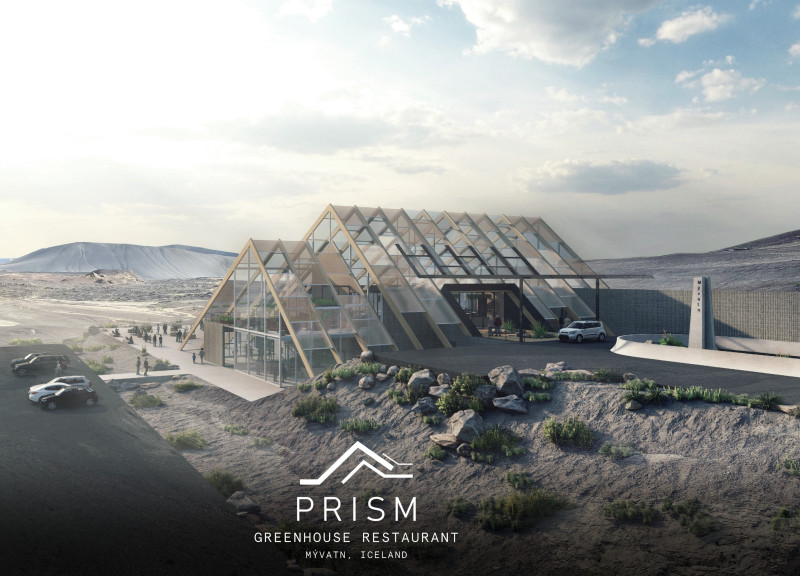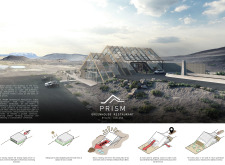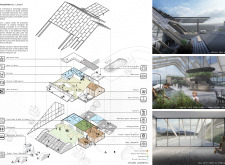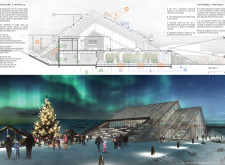5 key facts about this project
Unique Architectural Form
The architectural design of PRISM resembles a crystalline structure, designed to reflect the local terrain and climate. The incorporation of polycarbonate glass panels facilitates abundant sunlight throughout the space, reducing reliance on artificial lighting and enhancing the overall ambiance. The restaurant’s roof features an angled form that mirrors Iceland's landscape, optimizing views of the natural surroundings, including the northern lights. This aspect not only serves functional purposes but also enriches the dining experience by encouraging guests to engage with their environment.
The interior layout is optimized for both comfort and communal interaction. Various dining configurations, ranging from intimate tables to larger communal areas, encourage social dining. The integration of suspended planters and herb gardens throughout the interior reinforces the restaurant's commitment to a farm-to-table philosophy, allowing diners to witness the agricultural processes involved in food production.
Sustainability and Community Integration
PRISM prioritizes sustainability through its use of environmentally friendly materials and systems. The primary structural components consist of cross-laminated timber and prefabricated materials that minimize construction waste. The building incorporates geothermal heating and rainwater harvesting systems, demonstrating a comprehensive approach to energy efficiency and resource management.
The restaurant design extends beyond dining. An outdoor events plaza accommodates community gatherings, workshops, and educational programs, making PRISM a hub for local engagement. This integration of community spaces fosters a deeper connection between diners and the overarching themes of sustainability and environmental awareness, thus reinforcing the restaurant's role within the local context.
For those interested in delving deeper into the architectural design of PRISM, exploring the architectural plans, architectural sections, and architectural ideas provides valuable insight into this innovative project. Engaging with these resources can further illuminate the design intentions and practical implementations that define PRISM as an exemplar of modern sustainable architecture.


























